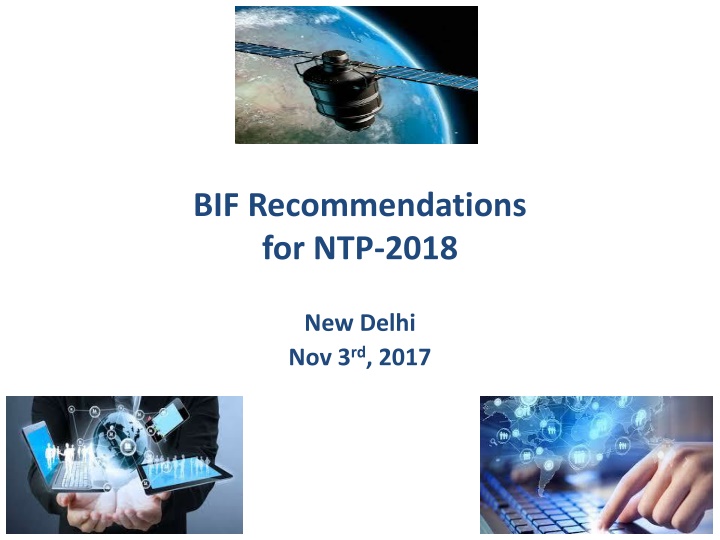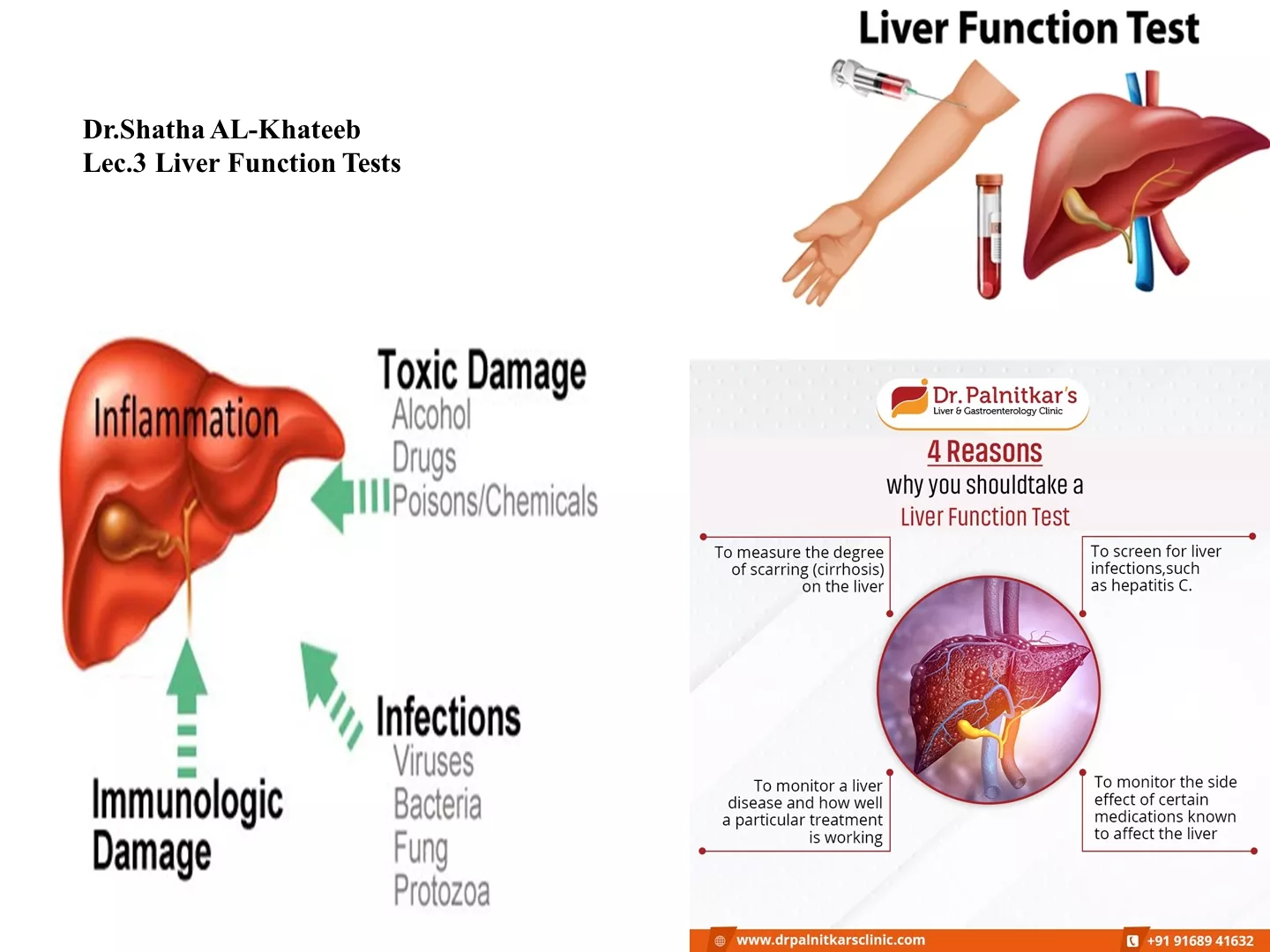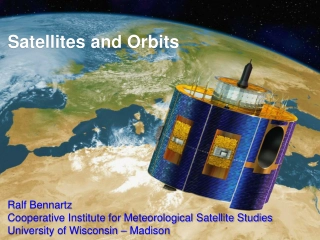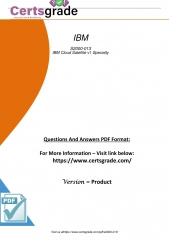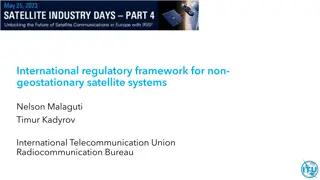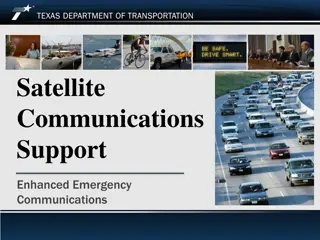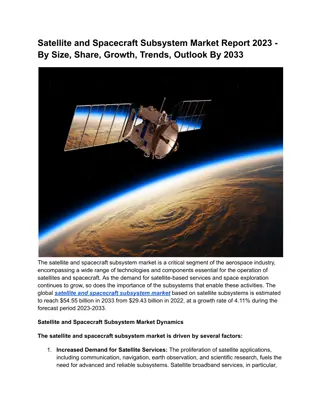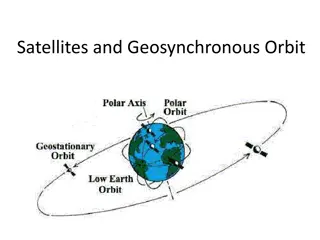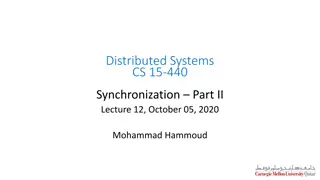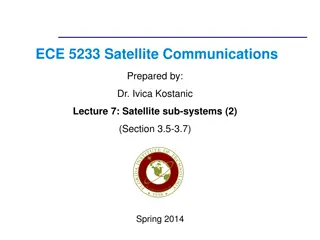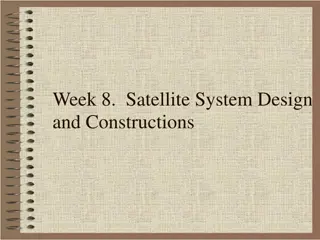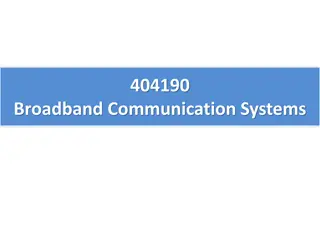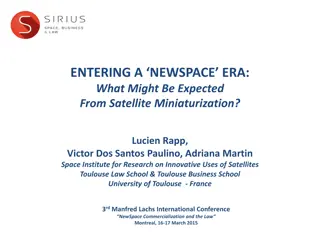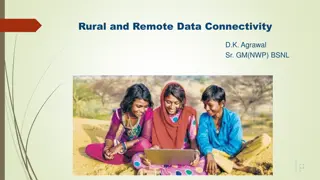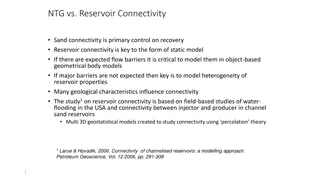Satellite Connectivity Recommendations for NTP-2018
This content provides insights and recommendations on satellite connectivity for NTP-2018, highlighting the need for increased private satellites in India to complement government efforts. It discusses the potential for foreign direct investment, the role of satellite technology in addressing digital disparities, and its impact on various sectors like banking, education, and rural development. The content emphasizes the importance of regulatory oversight and unrestricted technological advancements in satellite communication.
Uploaded on Mar 19, 2025 | 0 Views
Download Presentation

Please find below an Image/Link to download the presentation.
The content on the website is provided AS IS for your information and personal use only. It may not be sold, licensed, or shared on other websites without obtaining consent from the author.If you encounter any issues during the download, it is possible that the publisher has removed the file from their server.
You are allowed to download the files provided on this website for personal or commercial use, subject to the condition that they are used lawfully. All files are the property of their respective owners.
The content on the website is provided AS IS for your information and personal use only. It may not be sold, licensed, or shared on other websites without obtaining consent from the author.
E N D
Presentation Transcript
BIF Recommendations for NTP-2018 New Delhi Nov 3rd, 2017 1
Satcom - Quick Deploy, Reach 250K terminals in India deployed today Huge latent demand Digital India, Rural, SME, SOHO, North- East & LWE Areas, B2C... 2
Preamble: Satcom The Need Delhi India has ~1/6thof the world s population but only 3% of global satellites (<1% communication satellites) India is 1/3rd the size of US; has 4 times the population; but 1/4th the Communications Satellites More private satellites are needed to augment Govt (DOS) led efforts. This would have potential for FDI to come in. 3
Satellite growth in N. America the most wired region Over 1.4 million consumers in North America access the Internet via satellite Source: COMSYS VSAT Report 13th Edition
Indian Economy - Powered by Satellite 100,000 terminals in Bank ATMs; 4 Billion ATM transactions annually INDUSTRY Networking the $1.5 Trillion Equity Market Passing out 10% of all Ivy League MBA students Satellite > 1000 Movies distributed annually; piracy reduction GOVT. RURAL 30,000 Villages empowered by e-Governance Satellite Connectivity has enabled innumerable businesses in the Unserved and Underserved areas to get reliable broadband at an affordable price 5
Preamble: Satcom Neglected So Far Past NTPs No real mention of satellite Services or Satcom Terminals or Gateways Does not clarify role of DOS/ISRO VSAT Licenses to be issued (NTP- 1999) - refer to TEC GR; limitations to use Mention of only GMPCS (NTP-1999 & NTP-2012) as a new service along with Disaster Management (NTP- 1999) Users to avail satellite capacity from both domestic/foreign satellites, in consultation with DOS (NTP-1999) Recommending Mention role of Satcom for bridging the Digital Divide Satcom for enabling broadband access to unserved and underserved markets Satcom with regulations, fully under DOT-TRAI purview Satcom for all - ships/trains/ airplanes, in villages, backhauls to TSPs, for media convergence Without artificial restrictions on technology - speeds, power, frequency bands, terminal size etc. 6
VSAT Growth in IndiaImpact of Policy Capacity Bottleneck (Closing of Skies, Lack of HTS capacity) Banking, e-Gov, Digital Cinema, e-Learning, SME MULTIPLE KU-BAND SATELLITES, HIGH-POWER Rs. 2,500/Kbps Lack of Policy ATM, Oil, Lottery ERP, Stock Broking, E- Mail ADVENT OF KU-BAND, FOREIGN SATELLITES, REVENUE SHARE Rs. 5,000/Kbps Liberal BW Policy EXT-C INSAT- ONLY CAPACITY Rs. 50,000/Kbps NTP 1999 Source : TRAI
VSAT Growth in India.Forecast Scenarios Consumer/Retail Broadband, BharatNet, IoT, Aero, 4G Backhaul KA-BAND, REVISED SATCOM POLICY, HTS, OPEN SKIES, MOBILITY Rs. 250/Kbps POLICY INFLECTION POINT Banking, e-Gov, Digital Cinema, e- Learning, SME MULTIPLE KU-BAND SATELLITES, HI- POWER Rs. 2,500/Kbps ATM, Oil & Gas, Lottery ERP, Stock Broking, E- Mail ADVENT OF KU- BAND, FOREIGN SATELLITES Rs. 5,000/Kbps EXT-C INSAT- ONLY CAPACITY Rs. 50,000/Kbps Lack of Policy BUSINESS AS USUAL (Rs. 2500/Kbps) Liberal BW Policy NTP 1999
Open supply of Satellite Capacity from Private Players Procurement be allowed from any Satellite Capacity supplier So long as Satellite is Coordinated with Indian Administration under ITU guidelines Free Market Economy Current sole Satellite supplier; Antrix more of a canalizing agency Licensor + Regulator + Service Provider = Conflict of interest Should be consultative role eg. identify list of ITU coordinated Satellites for DOT to regulate DOS Role Benefit from globally available technologies like HTS, Spot Beams, Frequency Re-use, newer spectrum like Ka-Band, etc. Standardized equipment at global prices for globally comparable QoS Access to new satellite payload technologies that can lower the end- service price to consumers Benefits to India 10
Removal of Artificial Barriers for the Industry Current Barriers TEC GR TEC forces restrictions on carrier rate, terminal size, RF power etc. Same document allows broadcasters for more Restricts bands and satellite orbital locations VSAT License under UL Mandates terminal to be static Restricts operation to satellite supplied only by DOS Recommendation - The only limits imposed should be from the technology To maximise benefits to end-users, optimal use the satellite resources should be allowed Therefore, make regulation that is technology neutral, so as to exploit technology to the maximum, and allow quick adoption of new technologies. Benefits New satellite technologies for augmenting available capacity over India HTS, spot-beams, steerable beams, NGSO constellations etc. Enable customised applications ideally suited for specific satellite technologies and platforms Encourage newer applications like Inflight Connectivity, Connected Cars, Emergency Services, convergence of multimedia and broadband, M2M etc. 11
VSAT Services without restrictions Satellite broadband effectively complements other forms of broadband technologies: Access providers to be allowed to use VSAT service from VSAT providers as part of their bundled offerings to their customers Satellite Backhaul effectively extend Mobile Services of TSPs globally. VSAT service providers should be allowed to offer Cellular Backhaul services to TSPs without a separate NLD license and setup Allow VSAT providers to be permitted to carry voice to their SME customers in underserved or un-served areas, without need for any new license 12
Make the Satcom Terminal easily accessible De-license the satellite terminal purchase The licensed operators and captive VSAT users should be able to import the approved terminals without any further restrictions This could encourage local manufacturing of satellite terminals Allow installation of terminals by the operators on self certification basis Single window approach and a time bound process for approval of new gateways for licensed operators Maximum time of 60 days 13
Define the Role of Government Entities in Satcom TRAI & DoT policies and regulations including for satellite broadband services Identify/Regulate list of satellites for use over India for Ground Segment Service Provider to procure DoS to play consultative role for space policies and providing valued advise on the strategic aspects Separate out the roles of regulator and satellite provider Antrix - be the commercial arm to sell capacity on the Indian satellites of ISRO, as an independent agency To compete with the foreign satellite operators selling capacities in the country 14
Expand the Scope for VSAT Service Providers Indian VSAT providers should be allowed to serve the SAARC countries with gateways in India GSAT 9 was launched by ISRO with our PM s vision for serving SAARC countries SAARC countries have similar challenges to India, of connecting unserved and underserved areas on terrestrial infrastructure The VSAT operators have adequate expertise to offer cost effective solutions in these regions 15
Disaster Recovery for Teleport Services Satellite users with Broadcast Teleport in India should be allowed backup options to deal with emergency situations Alternate Broadcast Teleport option outside India, for exceptional disaster circumstances Alternate Satellite capacity to mitigate against exceptional satellite mishaps 16
Augmenting Satellite Capacity for Broadband by inducting ITU recognised spectrum Introduce planned Broadcasting Satellite Service (BSS) Spectrum to augment the overall Ku-Band satellite spectrum India uses only Fixed Satellite Service (FSS) Ku-Band for all applications VSAT Networks, DTH, DSNG FSS spectrum of 750 MHz + 800 MHz of BSS Satellites with BSS bands are abundantly available over India, but are unused Allowing BSS for broadcasting/DTH, would free up FSS and improve capacity supply for broadband applications 17
Security Norms for Satellite Operators to be streamlined Definition of security aspects related to satellite services needs to be brought out clearly The relevant security norms to be defined, for private Satellite Operators to serve the India market 18
Thank You 19
